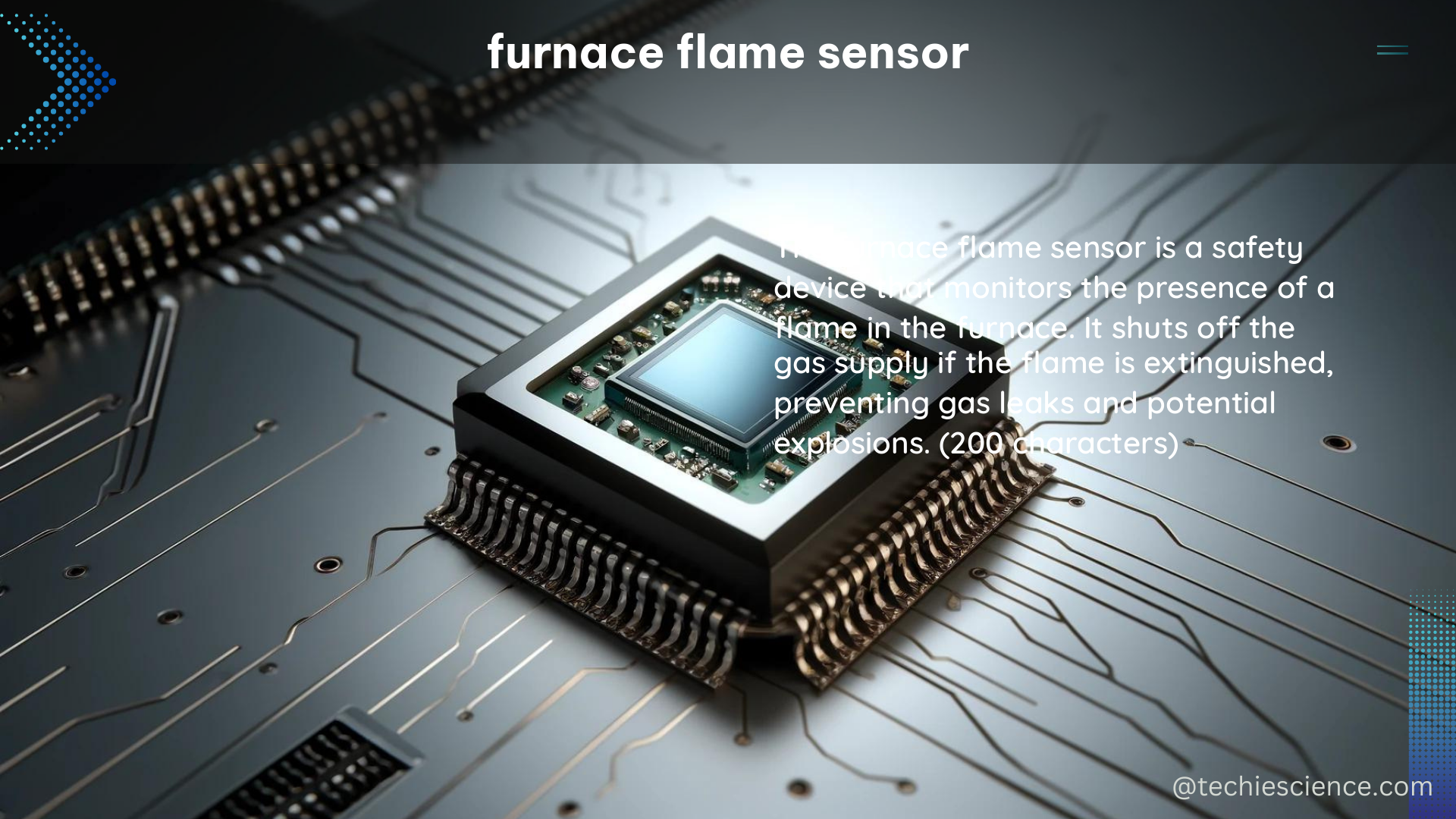A furnace flame sensor is a critical component in gas furnaces, responsible for detecting the presence of a flame and ensuring the safe operation of the heating system. This comprehensive guide delves into the technical specifications, working principles, and measurable data points of furnace flame sensors, providing a detailed understanding for DIY enthusiasts and HVAC professionals alike.
Understanding the Technical Specifications of Furnace Flame Sensors
Furnace flame sensors come in a variety of models and configurations, each with its own set of technical specifications. Let’s explore some of the key parameters:
Sensing Range
The sensing range of a furnace flame sensor typically falls within 0.5 to 2.5 inches. This range ensures that the sensor can accurately detect the presence of a flame within the furnace’s combustion chamber. Sensors with a wider sensing range may be more suitable for larger furnaces, while those with a narrower range may be better suited for smaller units.
Response Time
The response time of a furnace flame sensor is a critical factor in ensuring the safe and efficient operation of the furnace. The industry standard for response time is less than 10 milliseconds, allowing the sensor to quickly detect the presence or absence of a flame and trigger the appropriate safety mechanisms.
Operating Temperature Range
Furnace flame sensors must be able to withstand the harsh environmental conditions within the furnace. The typical operating temperature range for these sensors is -40 to 150 degrees Celsius (-40 to 302 degrees Fahrenheit), ensuring reliable performance in both cold and hot environments.
Sensor Element Material
The sensing element in a furnace flame sensor is typically made of a platinum wire coil. This material is chosen for its ability to detect changes in infrared radiation emitted by the flame, which alters the resistance of the coil.
Power Consumption
Furnace flame sensors are designed to be energy-efficient, typically consuming less than 1 watt of power. This low power draw ensures that the sensor does not significantly impact the overall efficiency of the furnace.
Lifespan
Furnace flame sensors are built to last, with a typical lifespan of several years before needing replacement. This long lifespan contributes to the overall reliability and low maintenance requirements of the heating system.
Understanding the Working Principle of Furnace Flame Sensors

Furnace flame sensors work by detecting the infrared radiation emitted by the flame within the combustion chamber. The sensor’s platinum wire coil is heated, and the presence of the flame alters the resistance of the coil. This resistance change is then measured and used to determine the presence or absence of a flame.
The sensor is typically mounted in a strong metal housing behind a flame arrestor, which allows the gas/air mixture to diffuse into the housing and onto the hot sensor element. The flame arrestor prevents the propagation of any flame to the outside atmosphere, ensuring the safety of the system.
Measurable Data Points and Efficiency Comparisons
In addition to the technical specifications, furnace flame sensors can be evaluated based on various measurable data points:
Power Consumption
As mentioned earlier, furnace flame sensors typically consume less than 1 watt of power. This low power draw is a testament to the sensor’s energy efficiency and its ability to operate without significantly impacting the overall efficiency of the furnace.
Lifespan
Furnace flame sensors are designed to have a long lifespan, typically lasting several years before needing replacement. This extended lifespan contributes to the low maintenance requirements of the heating system and helps to ensure its reliable operation over time.
Efficiency Comparison
While a computer or other electrical device may consume a similar amount of power to a furnace, it is important to note that they are not equally efficient at generating heat. Furnaces are specifically designed to generate heat, while computers and other devices are designed for computational tasks, with any heat generated being a byproduct of their operation. As a result, furnaces are generally more efficient at converting energy into usable heat compared to electrical devices.
Conclusion
Furnace flame sensors are a critical component in gas furnaces, responsible for detecting the presence of a flame and ensuring the safe operation of the heating system. By understanding the technical specifications, working principles, and measurable data points of these sensors, DIY enthusiasts and HVAC professionals can better maintain, troubleshoot, and optimize the performance of their furnaces.
References:
– Reddit Discussion on Computer Efficiency vs. Furnace Efficiency
– Honeywell Analytics Gas Book
– Honeywell Safety Services Gas Book

The lambdageeks.com Core SME Team is a group of experienced subject matter experts from diverse scientific and technical fields including Physics, Chemistry, Technology,Electronics & Electrical Engineering, Automotive, Mechanical Engineering. Our team collaborates to create high-quality, well-researched articles on a wide range of science and technology topics for the lambdageeks.com website.
All Our Senior SME are having more than 7 Years of experience in the respective fields . They are either Working Industry Professionals or assocaited With different Universities. Refer Our Authors Page to get to know About our Core SMEs.